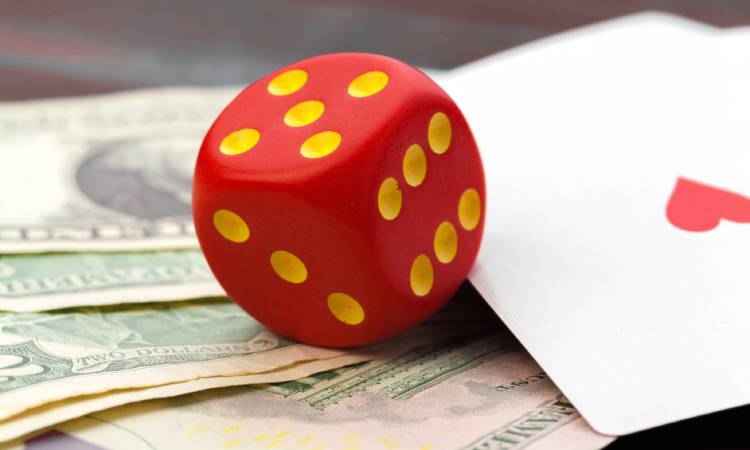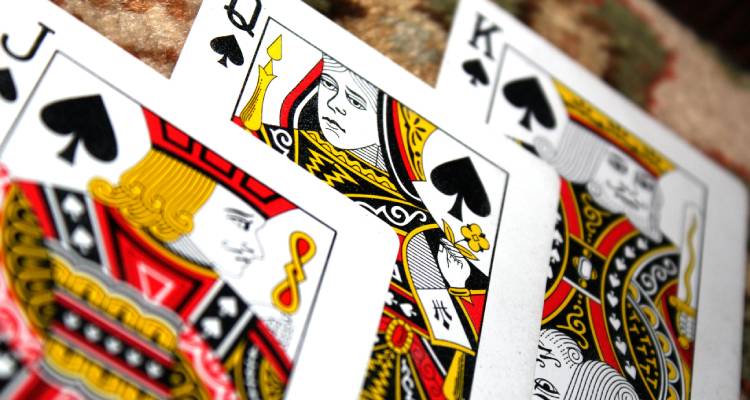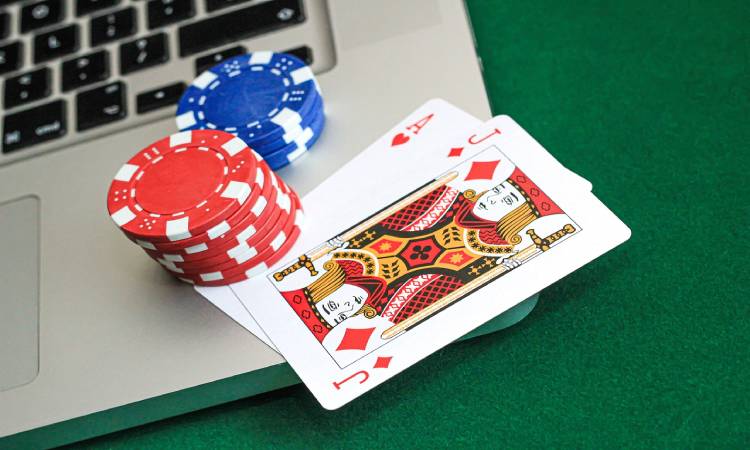Texas Hold’Em Strategy: How To Play Like a Pro? We Got You, Bro!

Sup, my rollers!
In this strategy guide, we’re going to talk about Texas Hold’em, and more importantly, we’re gonna teach you how to play this cash game, and how to play it well! Texas Hold’em is easy to learn, but hard to master. This comprehensive Texas Holdem Strategy guide serves to shorten that gap. Let’s roll!
Texas Holdem Rules: What Beats What
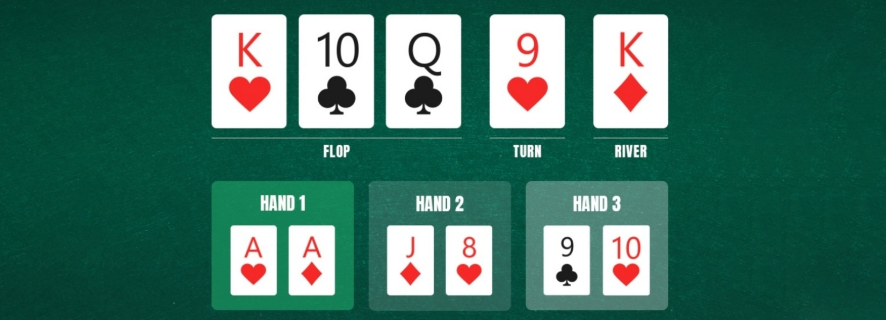
Before we get into the nitty-gritty, first we need to cover the basics before we teach you how to play the casino game, right? If you are familiar with this bit, skip it. Beginners, hang on to your pants.
- Each player at the table is dealt two hole cards – nobody else can see them or use them but you.
- As the game progresses, the dealer will put down an additional five cards on the table – three at the first turn, another card at the second, and the final fifth during the third turn. The goal is to make the best possible five-card hand combination out of the given cards (7 in total).
- Before a new card(s) is revealed, players go about placing their bets. Each player must contribute an even amount of chips to the pot in order to stay until the final reveal. That, or you can just fold and wait for the next round.
- The player with the best poker hand wins the pot. Lickety-split!
What makes Texas Hold’em poker games so darn exciting to play is when you play strong hands while you watch that bet sizing move up. We’ll call this the “what beats what” rule. In most cases, you’ll be able to recognize the winning hand without a hitch. But don’t let that fool ya! A single mistake can turn the game upside-down. For example, you and your opponent may have similar hands but it can take a single, seemingly innocent, card to make you lose your bet. Memorize these rules like your life depends on it:
- Royal Flush — five cards of the matching suit, ranked ace through ten – A♥K♥Q♥J♥10♥
- Straight Flush — five cards of the matching suit and consecutively ranked – 9♣8♣7♣6♣5♣
- Four of a Kind — four cards of the matching rank – Q♣Q♥Q♦Q♠4♦
- Full House — three cards of the matching rank and two more of a different matching rank – J♣J♥J♠8♦8♥
- Flush — any five cards of the matching suit – A♠J♠8♠5♠2♠
- Straight — any five cards consecutively ranked – Q♣J♦10♥9♠8♦
- Three of a Kind — three cards of the matching rank – 8♣8♠8♦K♣4♥
- Two Pair — two cards of the matching rank and two more of a different matching rank – A♠A♣J♦J♣7♠
- One Pair (pocket pair) — two cards of the matching rank – 10♥10♣9♥4♦2♦
- High Card — five unmatched cards – A♣J♦10♠5♣2♥ would be called “ace-high”
With hand combinations out of the way, it’s time to move to the Texas Holdem strategy and tips. Let’s get our game on, Bros.
Texas Holdem Strategy: Check Raise
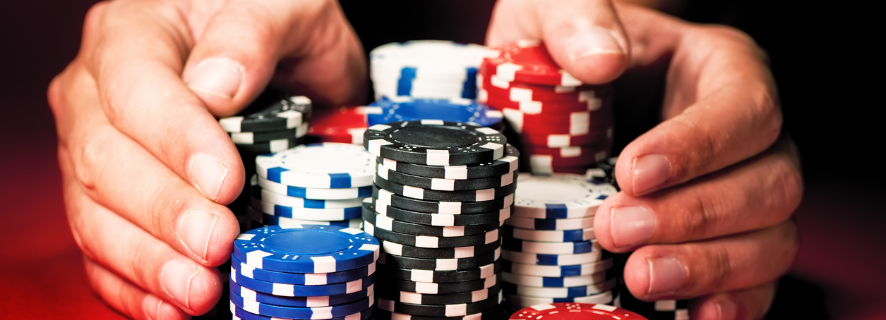
“If you can’t spot the sucker at your table, it’s probably you!”
Although pretty straightforward, there isn’t one “right way” to play Texas Holdem games. You’ll find heaps of poker strategy tips on the internet. However, most of them are based on reading the room, and most importantly, calling a bluff (or a semi bluff). What makes Texas Holdem so fun to play is this sense of mystery and intrigue surrounding each poker player. Learning how to read and play your opponents is PURE ART!
Check Raise Strategy
With this in mind, one of the best strategies is definitely the check raise strategy. A lot of players consider this Texas Holdem strategy to be “dirty”, but hey, there are no rules against it (as a matter of fact, I’ve seen people often use check raising as a tournament strategy, too). It’s actually a fairly simple poker strategy. The only caveat to check raising is that you have to be EXTRA careful when you play it. Essentially, what you want is to tempt your opponent to pour more money into the pot and play them like a fiddle before the last betting round. So, how do you do this?
Keep checking the moment you grab hold of your hand and trick each opponent into thinking that you have a weak hand. Create a bad table image for yourself, on purpose. Just bear in mind, you have to be a sly cat if you want your opponent to fall for this play. The aim is to encourage them to bet more money and follow them “reluctantly.” Then, prior to the showdown, you raise the bet with check raising and honeytrap their money in the pot. Be careful, though! This strategy only works when you have strong hands, especially if you are into live dealer casinos.
Pro advice: Don’t play the same Texas Holdem poker strategy over and over again. Savvy players will be onto you. Subtlety is key.
Check Raise for Value
While not exactly a tournament strategy, poker sites and certain strategy articles state that check-raising for value is generally the most fun poker strategy out there. However, if you are no stranger to putting all your chips at risk, you should be pretty confident in your hand before you take advantage of any unwitting opponents. Prompting your opponent into thinking you have a weak hand might prompt him/her to increase their bet in return. This potentially gives you enough leeway to snatch the whole stack. Here are a few things you should know when using this Texas Hold’em strategy:
- You must do it before each opponent present
- The poker player next to you must be willing to bet even with a weak hand
- Check-raising is a powerful move and can force an opponent to lay down his or her hand even if it isn’t a good hand
Just remember, again, don’t use the exact strategies in all your games. If you do, you’ll be easy to read.
Check Raise as a Bluff
You can also use the check raising strategy when bluffing. Where’s the catch? Well, if you have successfully used check raise to win the pot a few times, other players are probably onto you by now. This is a good opportunity to pull a different stunt when you have a weak hand. Your check might fool your opponents. They might think you are trying to trap their money again, which might make them fold prematurely. This Texas Hold’em strategy is all about getting into the opponent’s head.
For all those who want to know more about casino establishments, feel free to check out our casino reviews section.
Starting Hand Chart: Player Guide
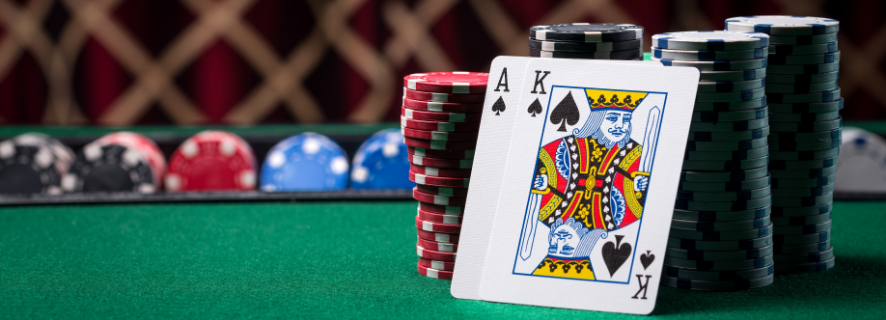
The starting hand is one of the most important aspects of a Texas Hold’em session because it deeply affects your decision-making. Once you see the cards, you’ll have to decide to hold’em or fold’em. This can make or break your cash game so listen up!
The Best Starting Hands In Texas Hold’em
There are plenty of starting hand combinations in this game, but we are going to talk about the top three groups. The best starting hands are also called “premium hands” and for a good reason – they’re ahead of virtually any other hand pre-flop. These include:
- Pocket Aces and King
- Pocket Queens and Jacks as well as the Ace-King combination
- TT, AK, AQs, AJs, KQs
Aces And Kings
Aces and Kings are by far the best starting pocket pairs you can get in Texas Hold’em. However, there’s no need to be all smug about it because you can still lose easily, especially when there’s a large number of players sitting. One of my rules is: if you draw Aces or Kings, you should definitely raise the bet pre-flop to make other players fold or on the edge of their nerves. When you play kings, be careful of those aces.
Queens And Jacks And The Ace-King Combination
Having Queens and Jacks in your starting hand puts you in a decent position as well. Sure, there’s a chance that someone has Aces or Kings, but that doesn’t necessarily diminish your chances of winning. Remember: all it takes is a single card to screw you over. When it comes to the Ace-King combination, that is a pretty good hand right there, even though it’s not a pair or a suit. With this hand, you can win against AQs, AJs, ATs, and other weaker cards.
TTs, AK, AQs, AJs, KQs
This is also a good group of starting hands. If you get a hand like this, deciding to raise the bet pre-flop will probably help you win the pot. However, be careful, especially if you are playing against a lot of players. Here are some juicy hand range charts you should look at if you want to know how to play various hands.
| Pairs | Action | Early | Mid | Late | SB | BB |
| AA, KK, QQ | Folded to you | Raise | ||||
| Caller(s) before you | ||||||
| Raised before you | ||||||
| JJ, TT | Folded to you | Raise | ||||
| Caller(s) before you | Raise | |||||
| Raised before you | Call* | |||||
| 99-22 | Folded to you | Fold | Raise | |||
| Caller(s) before you | Call | Check | ||||
| Raised before you | Call* | |||||
| Ace-X Hands | Action | Early | Mid | Late | SB | BB |
| Aks, Ako | Folded to you | Raise | ||||
| Caller(s) before you | ||||||
| Raised before you | ||||||
| AQs, AQo, AJs | Folded to you | Fold | Raise | |||
| Caller(s) before you | Fold | Raise | ||||
| Raised before you | Fold | |||||
| AJo, ATs, ATo | Folded to you | Fold | Raise | |||
| Caller(s) before you | Fold | Raise | Check | |||
| Raised before you | Fold | |||||
| A9s – A2s | Folded to you | Fold | Raise | |||
| Caller(s) before you | Fold | Call | Check | |||
| Raised before you | Fold | |||||
| Playable Hands | Action | Early | Mid | Late | SB | BB |
| KQs, KQo, KJs
KJo, QJs |
Folded to you | Fold | Raise | |||
| Caller(s) before you | Fold | Call | Check | |||
| Raised before you | Fold | |||||
| KTs, KTo, QJo, QTs, Q9s
JTs, J9s, J8s, T9s, T8s 98s, 87s, 76s, 65s, 54s |
Folded to you | Fold | Raise | |||
| Caller(s) before you | Fold | Call | Check | |||
| Raised before you | Fold | |||||
| Group 1 | Action before you | Early | Mid | Late | SB | BB |
| AA, KK, QQ
AKs, AKo |
Any action | Raise | ||||
| Group 2 | Action before you | Early | Mid | Late | SB | BB |
| JJ, TT
AQs, AQo, AJs, KQs |
Folded to you | Raise | ||||
| One caller before you | Raise | |||||
| Two or more callers | Raise | |||||
| Raised, no callers | Call | |||||
| Raised, cold callers | Call | |||||
| Group 3 | Action before you | Early | Mid | Late | SB | BB |
| AJo, ATs, ATo
KQo, KJs, QJs |
Folded to you | Fold | Raise | |||
| One caller before you | Fold | Raise | ||||
| Two or more callers | Call | Raise | Check | |||
| Raised, no callers | Fold | Call | ||||
| Raised, cold callers | Fold | Call | ||||
| Group 4 | Action before you | Early | Mid | Late | SB | BB |
| 99 – 22
A9s – A2s |
Folded to you | Fold / Call* | Raise | |||
| One caller before you | Fold / Call* | Call | Check | |||
| Two or more callers | Call | Check | ||||
| Raised, no callers | Fold | Call | ||||
| Raised, cold callers | Call | |||||
| Group 4 | Action before you | Early | Mid | Late | SB | BB |
| KJo, KTs, KTo
K9s, K8s QTs, QJo, QTo, JTo Q9s, JTs, T9s, J9s, T8s 98s, 87s, 76s, 65s, 54s |
Folded to you | Fold | Raise | |||
| One caller before you | Fold | Call | Check | |||
| Two or more callers | Fold | Call | Check | |||
| Raised, no callers | Fold | |||||
| Raised, cold callers | Fold | |||||
Player Position And Why It Matters
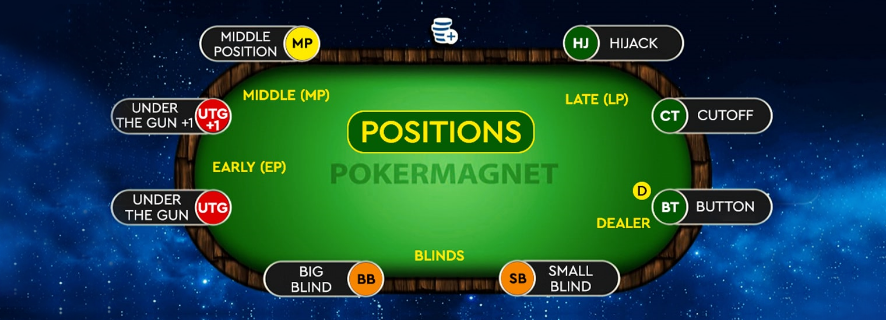
“If there weren’t luck involved, everyone would be a winner.”
Luck is the ultimate equalizer, especially in poker. It’s the reason why even the greatest of players fail to win every tournament they enter. Put another way, it’s also the reason why average players have a chance to take down the main event. And yet, the pros often claim that the table position is more important than the hand you are dealt with. I couldn’t agree more. Let’s go over this and cover phases at the same time. Real multitasking, right here!
The Pre-flop
The dealer sits in the middle. The first player left from the dealer is called the Small Blind and this person has to bet first. I don’t like it when I’m the small blind because I have to put money in the pot even after a bad hand. In a way, it feels like paying taxes.
After this, the Big Blind position has to double the bet. Having a bad hand and being in the big blind is pretty frustrating, but this ensures there’s always money in the pot. Still, remember to keep your cool! If an opponent detects even a hint of doubt, they will rob you blind – big blind! Therefore, place the bets with the exact gusto every time. After those two taxpayers have placed their bets, the next player at the table, the guy/gal in the Under The Gun position, has three options – raise the bet, call the bet or fold. This person is the first to act and I hate to stare down that barrel. Everyone is studying me and I have to watch my every move.
Honestly, I make most of my mistakes when I’m sitting in this position. It might be a good idea to study a few Texas Holdem preflop charts so you know how to react during this phase. After Under The Gun 1 plays, the poker session continues in the clockwise direction and other players (Middle Position 1, Middle Position 2, Hijack, and Cut Off/On the button) have the same three options. This concludes the “pre-flop” phase of the poker game.
The Flop
Then there’s the flop phase. This is the part of the game where poker players are able to see the first three cards on the table. Once the community cards are revealed, people are able to place their bets. Oh, I love this part! Seeing those first three always gets my heart racing. Of course, this only applies to the poker players who haven’t folded. Don’t feel bad if you fold early. I do it all the time when I have a bad hand. It can save your neck, especially when stakes are high. From this point, the player who plays first is the one who sits closest to the dealer on his left side.
Did I mention how I hate playing first because I don’t have the opportunity to study other players? The players have those three options I already mentioned, but now they also have the check option. This option allows you to sit and do nothing. I love doing nothing, especially if I have a drink in front of me. Too bad you can do this only if the players before you haven’t placed any bets.
The Turn
Once the betting is concluded, the fourth card on the table is revealed. It’s the post flop, bros! This part of the game is called The Turn. Once the players see the fourth card, they are placing their bets. They have two chances to place a bet after the card is revealed.
The River
After everyone places their bets, the dealer reveals the fifth and final card. This part of the game is called The River. Once the last card is revealed, the remaining players at the table give each other mean looks and place their final bets on the poker table. This is my favorite part of the game. Honestly, when the fifth card is the one I was hoping for, it’s hard to not get excited but if you remain calm, the opponents might just sweeten the pot even more.
The Showdown
The only thing left is the Showdown. Yeah, it’s as cool as it sounds. This is when players show their hands and the player with the best hand takes the chip stack. If you have the best hand, this is where you get to say a cool one-liner as you take away the chips from your opponents. I usually go with: “Sorry, fellas, nothing personal.” An opponent/friend once got so angry that he actually sent an entire essay to my email address telling me how lame my zinger was.
Disclaimer: Best deposit bonuses can make or break you overall gambling experience. Check out our casino bonuses section for the deets.
Texas Holdem Poker Odds Calculator and Poker Trainer

Simply reading all the poker tips I talked about today is definitely not enough for you to become a pro player. You should have a go-to Texas Holdem strategy and know how to read the players and their hands.
The things that can help you with this are the Texas Holdem Odds calculator and the Poker Trainer. The calculator can help you improve your win rate by showing all the outcomes based on the hand you have. The poker trainer is like a training site where you can practice your strategies, bet sizing, and your play in general so you can get ready for the real cash games. Essentially, those two programs were my best friends before I started playing experienced players.
Texas Hold’em Strategy Summary
Texas Hold’em poker always gives me those cool cowboy vibes as you go about stirring things up in a Wild West saloon. At least, that’s how I feel when I’m holding my hole cards and profiling my opponent.
The most important thing I want you to remember when you sit down to play – the Devil is in the details. Keep your good eye on what other players do or say while playing. Search for their weaknesses. The way they laugh or clear their throat. The way they fidget. Everyone’s got a tell. You just have to sniff it out and take advantage of it. The best Texas Holdem cash games are those where you had a terrible hand and you walked out as the winner.
I will leave you with this quote from Dutch Boyd:
“Poker is a lot like sex – everyone thinks they are the best, but most don’t have a clue what they are doing!”
Okay, that’s it from me, bro. Go get them, tiger! We got you, Bro!
FAQ
-
Is Texas Holdem pure luck or is there skill involved?
Performance is predictable. If everything was left to chance there would be no correlation in the winnings of players across successive periods. On the other hand, there is a correlation in a game of skill.
Various simulations compared the performance of skilled and unskilled players. The tipping point? Seasoned players can expect to do better than their noob counterparts – at least three quarters of the time after almost 1,500 hands played.
In other words, Texas Hold’em is a game of skill after around 1,500 hands. To put this into better perspective, it takes about 19 to 25 hours for most online players to play 1,500 hands.
-
What's the difference between Texas Hold'em and poker?
Although similar on paper, Poker and Texas Hold’em are not the same thing in practice. Essentially, Texas Hold’em is a community card game. In a community card poker game, every player is dealt a defined number of “hole” cards that belong to each individual player. Each player then matches their hole cards with the “community cards” in an attempt to make a 5-card poker hand.
-
What makes Texas Hold'em so popular?
Although hard to master, the game is easy to teach, learn, and play. This approachability makes it an all-round superstar card game, especially when money starts changing hands.
-
Why is it called Texas Hold'em in the first place?
Although there are many myths surrounding this game, it’s roots date back to the 1920s. Around that time, the version commonly known as Texas Hold’em Poker was first introduced – an invention of a road gambler from Texas called Blondie Forbes. This fella was inducted into the Poker Hall of Fame in 1980 for his contribution to gambling.
